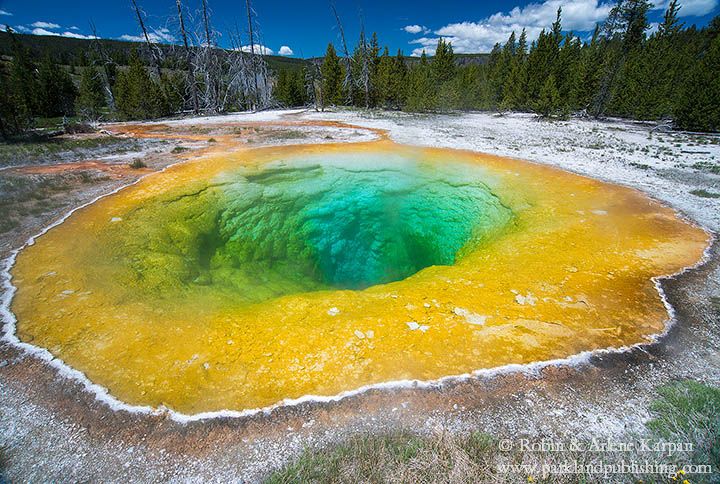

On a sunny day, landscape photography is best done either early or late in the day. Right? Well, mostly right. Midday light is harsh, with dark shadows, and seldom flattering in most settings. For landscapes photographers, the day usually starts before sunrise and ends after sunset. Midday is the time to rest, maybe have a long leisurely lunch or perhaps take a nap.
But like most “rules” in photography, exceptions abound. When you want the sunlight to penetrate through the surface of the water rather than reflect off, high noon becomes prime time. A good example of this is photographing many of the colourful thermal features of Yellowstone National Park in the USA.
One of the most eye-catching features is Morning Glory Pool, named after the flower it resembles, a short walk from the famous Old Faithful geyser. The centre of the pool is a deep funnel-shaped depression with a dazzling bluish-green colour caused by bacteria. It’s only around midday that the sunshine can cut through the water and reach deep into the funnel to fully illuminate the colours, with no harsh shadows to interfere. It’s easy to photograph, with a convenient viewing platform immediately next to it. Because you’re so close, a fairly wide lens is necessary (we used a 17- 35 mm zoom set at 18mm on a full frame Nikon D800). A polarizing filter helps to cut through any glare and deepen the colours.
So much for that long leisurely lunch and a nap.


Congrats on the blog! I love it. And I think we’ll have to go to Yellowstone when US travel is more likely. Keep the photography tips coming, as I plan to have more fun with the camera this year.